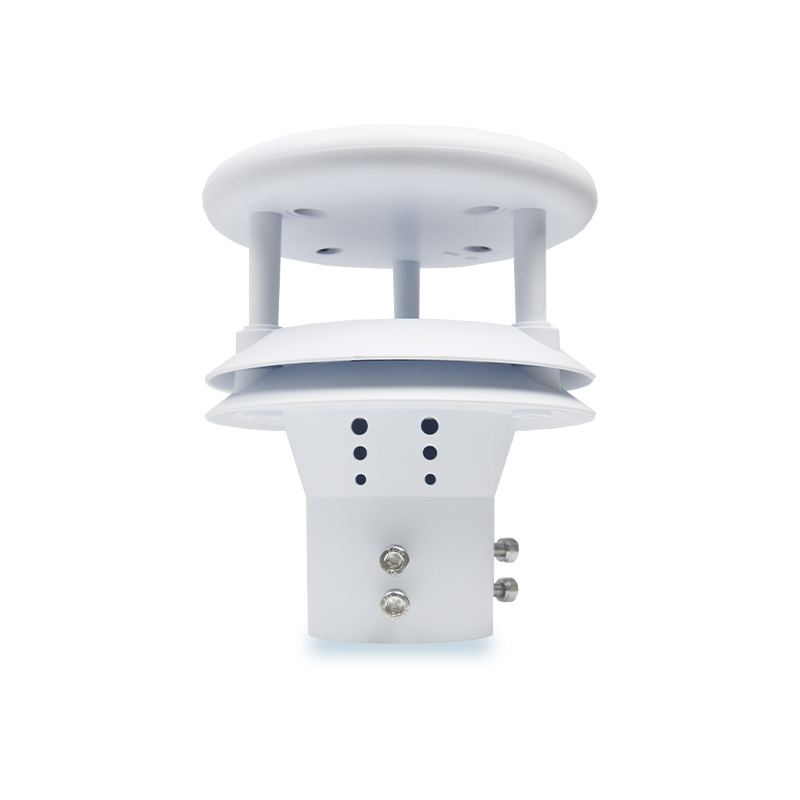Shandong Fengtu IOT Technology Co., Ltd
Sales Manager:Ms. Emily Wang
Cel,Whatsapp,Wechat:+86 15898932201
Email:info@fengtutec.com
Add:No. 155 Optoelectronic Industry Accelerator, Gaoxin District, Weifang, Shandong, China

Sales Manager:Ms. Emily Wang
Cel,Whatsapp,Wechat:+86 15898932201
Email:info@fengtutec.com
Add:No. 155 Optoelectronic Industry Accelerator, Gaoxin District, Weifang, Shandong, China
time:2025-04-09 09:10:24 source:Weather Station viewed:241 time
Both the piezoelectric rain gauge and the Stainless Steel Tipping Bucket Rain Gauge are commonly used tools for measuring rainfall data. So, which of these two products is better? How should consumers choose between them? Next, the editor will provide a detailed comparison of the differences between the two.
First, let's look at the working principles.
The piezoelectric rain gauge utilizes the piezoelectric effect of piezoelectric materials. When raindrops hit the piezoelectric sensor, an electrical charge signal is generated, and the rainfall amount is calculated by measuring and analyzing this electrical charge signal.
The Stainless Steel Tipping Bucket Rain Gauge, on the other hand, uses a tipping bucket mechanism with an upper and a lower bucket. Rainwater enters the upper bucket. When a certain amount of water is accumulated, the water in the upper bucket causes the tipping bucket to tip over, pouring the water into the lower bucket. At the same time, the tipping of the bucket triggers a signal, and the rainfall amount is calculated by recording the number of times the tipping bucket tips over.
Second, let's consider the accuracy.
The piezoelectric rain gauge generally has a higher accuracy. It can precisely measure slight changes in rainfall and can achieve an accuracy of 0.1 millimeters or even higher. It also performs excellently in measuring small amounts of rainfall and can accurately monitor trace amounts of precipitation.
The accuracy of the Stainless Steel Tipping Bucket Rain Gauge usually reaches 0.2 millimeters or 0.5 millimeters. Its accuracy may decrease during heavy rainfall because there is a certain inertia and delay in the tipping of the bucket, which may lead to measurement errors.
Third, let's examine the response speed.
The piezoelectric rain gauge has a fast response speed and can measure the instantaneous changes in rainfall in real-time. It can quickly react to changes in rainfall intensity within a short period.
The response speed of the Stainless Steel Tipping Bucket Rain Gauge is relatively slow. Since the tipping bucket needs to accumulate a certain amount of rainwater before it tips over, it cannot promptly reflect the instantaneous changes in rainfall when the rainfall intensity suddenly changes.
Fourth, let's assess the durability.
Since the piezoelectric rain gauge has no moving parts inside, it is not easily subject to wear and corrosion, and it has high durability and stability, making it suitable for long-term continuous use. However, the piezoelectric sensor may be affected by strong electromagnetic interference.
As for the Stainless Steel Tipping Bucket Rain Gauge, its mechanical components such as the tipping bucket are prone to wear and corrosion and require regular maintenance and calibration to ensure measurement accuracy. In harsh environments, such as low temperatures and dusty conditions, its normal operation may be affected.
In this regard, both have their limitations.
Fifth, let's look at the applicable scenarios.
Due to its high accuracy, the piezoelectric rain gauge is suitable for scenarios where high accuracy and real-time performance of rainfall measurement are required, such as meteorological scientific research, urban refined meteorological services, and hydrological monitoring. It can also be installed in some remote areas because its maintenance-free feature can reduce the cost and difficulty of manual maintenance.
The Stainless Steel Tipping Bucket Rain Gauge is widely used in weather stations, hydrological stations, and some daily rainfall monitoring scenarios where extremely high accuracy is not required. Due to its relatively simple structure and low cost, it is also commonly used in some large-scale rainfall monitoring networks.
In conclusion, if you value high precision, real-time performance, and durability and plan to use it in the field of scientific research, it is recommended to choose the piezoelectric rain gauge. If it is for general meteorological observations and daily rainfall monitoring and you are sensitive to costs, the Stainless Steel Tipping Bucket Rain Gauge will be a good choice.

The Visibility detector is an intelligent meteorological monitoring device, mainly used for real-time monitoring of low visibility meteorological conditions, and is widely applied in fields such as transportation, meteorology, and environmental monitoring. This system, through the front-end visibili...
Tunnel spaces are relatively enclosed with limited ventilation. Exhaust emissions from large numbers of motor vehicles (especially diesel vehicles) contain significant amounts of suspended particles (such as soot, sulfates, etc.). These particles are difficult to disperse quickly and accumulate in t...
The Insect Monitoring Light integrates modern optoelectronic, numerical control, and other technologies in its working principle. It utilizes a specific light source, typically a 20W blacklight tube with a main wavelength of 365nm, which emits light highly attractive to pests, causing them to approa...
In traditional agriculture, farmers have long relied on the labor mode of "facing the loess and having their backs to the sky", understanding various situations in the fields through a hands-on approach. This way not only consumes a lot of physical strength and time but also has many limit...